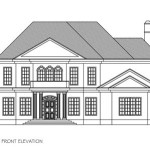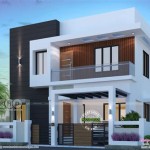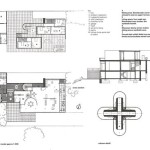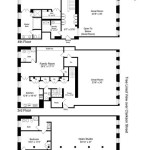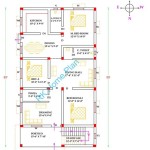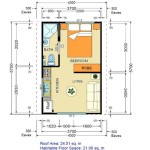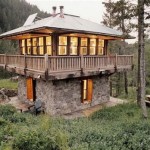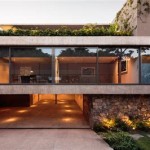House Plans for 10,000 Square Feet
Designing a house encompassing 10,000 square feet requires meticulous planning and a clear vision. This substantial square footage offers immense potential for luxurious living, accommodating large families, incorporating specialized spaces, and integrating high-end amenities. Understanding the complexities involved in planning such a large residence is crucial for a successful outcome.
One of the first considerations when planning a 10,000 square foot home is the desired architectural style. Options range from classic and traditional designs, such as Georgian, Colonial, or Mediterranean, to more modern and contemporary aesthetics. The chosen style will influence the overall layout, exterior finishes, and interior design elements. Careful consideration should be given to how the architectural style will integrate with the surrounding landscape and neighboring properties.
Defining the functional requirements of the home is paramount. This involves determining the number of bedrooms and bathrooms needed, the size and configuration of the kitchen and dining areas, whether specialized spaces like a home theater, gym, library, or indoor pool are desired, and the extent of formal and informal living areas. A well-defined list of functional requirements will guide the design process and ensure the final plan meets the specific needs of the occupants.
Creating distinct zones within the expansive floor plan can enhance functionality and livability. A 10,000 square foot home can easily be segmented into public, private, and service zones. The public zone might encompass the entryway, formal living and dining rooms, and entertainment areas. The private zone would house the bedrooms, bathrooms, and potentially a family room or den. The service zone would include the kitchen, pantry, laundry room, and any utility spaces.
Effective space planning is essential to avoid a feeling of vastness and emptiness. While open-concept designs are popular, strategically incorporating walls and partitions can create a sense of intimacy and define individual spaces within the larger footprint. Careful attention should be paid to the flow and circulation between rooms, ensuring ease of movement and logical connections between different areas of the house.
Natural light plays a vital role in creating a welcoming and comfortable environment. Large windows, skylights, and strategically placed glass doors can maximize natural light penetration throughout the home. Consideration should be given to the orientation of the house to optimize solar gain and minimize energy consumption. Artificial lighting plans should be developed to complement natural light and provide adequate illumination in the evenings.
Outdoor living spaces become an extension of the interior in a large home. Patios, decks, balconies, and porches can provide additional areas for relaxation, entertainment, and enjoying the surrounding landscape. Integrating outdoor kitchens, fireplaces, and swimming pools can further enhance the outdoor living experience. Landscaping should be carefully planned to complement the architectural style of the house and create a cohesive outdoor environment.
Sustainability is an increasingly important consideration in home design. Incorporating energy-efficient appliances, high-performance windows, and insulation, and utilizing sustainable building materials can significantly reduce the environmental impact of a large home. Consideration should also be given to water conservation measures, such as rainwater harvesting and drought-tolerant landscaping.
Accessibility is another factor to consider, particularly if the home is intended for multigenerational living. Incorporating features like wider doorways, ramps, and elevators can ensure the home remains accessible to individuals with mobility challenges. Universal design principles can be applied throughout the home to create a more inclusive and adaptable living environment.
Working with a qualified architect and experienced builder is crucial for a project of this scale. They can provide expert guidance throughout the design and construction process, ensuring the final product meets the highest standards of quality and functionality. Clear communication and collaboration between the homeowner, architect, and builder are essential for a successful outcome.
Budgeting for a 10,000 square foot home requires careful consideration of construction costs, material selections, and potential unforeseen expenses. Developing a realistic budget early in the planning process can help avoid cost overruns and ensure the project stays on track. Regular communication with the builder regarding cost updates and potential changes is essential.
Finally, local building codes and regulations will dictate specific requirements for the design and construction of the home. Obtaining the necessary permits and approvals is a crucial step in the process. Working with professionals familiar with local regulations can streamline the permitting process and ensure compliance with all applicable codes.

One Story Floor Plan Single House Plans Large Mansion

10 000 Square Foot Newport Ca Mansion Main Level Floor Plan Luxury House Plans

Modern House Plans 10000 Plus Square Feet

U10612r House Plans Over 700 Proven Home Designs By Korel Luxury Design Floor

Floor Plan Main Is 6900sq Ft 10 000 Sq Dream House Plans Vancouver Toronto Ca Single Story Large Mansion

Modern House Plans 10000 Plus Square Feet

Floor Plans 7 501 Sq Ft To 10 000 House Mansion Plan

Humber House Mansion Plans Luxury

10000 Square Foot House Plans Near Me 2 Story 5 Bedroom Dream Designs Tandem Garage T866d Nethouseplans 12

Ultimate Dream Home 66024we Architectural Designs House Plans

